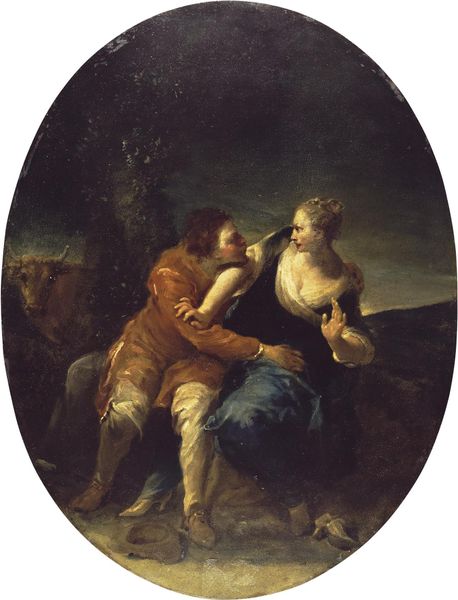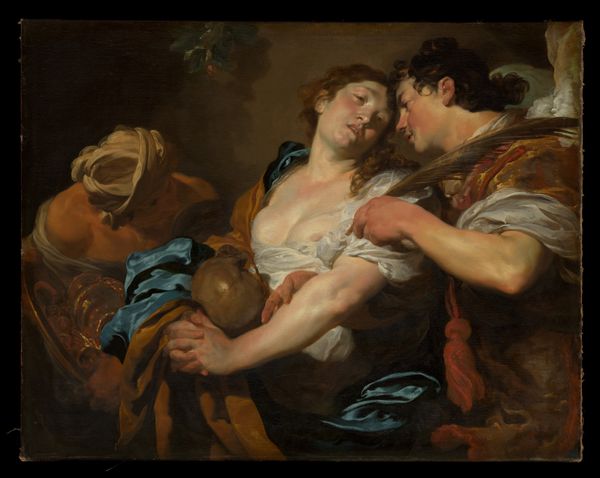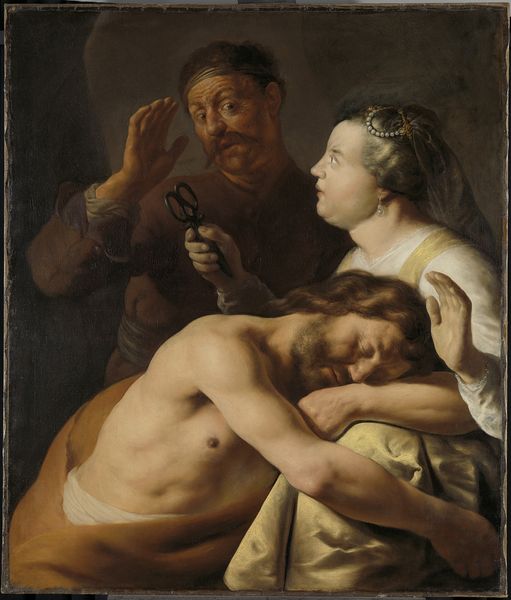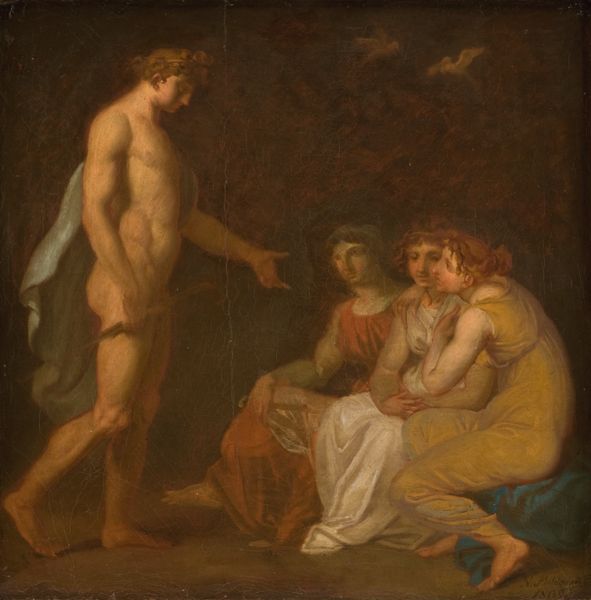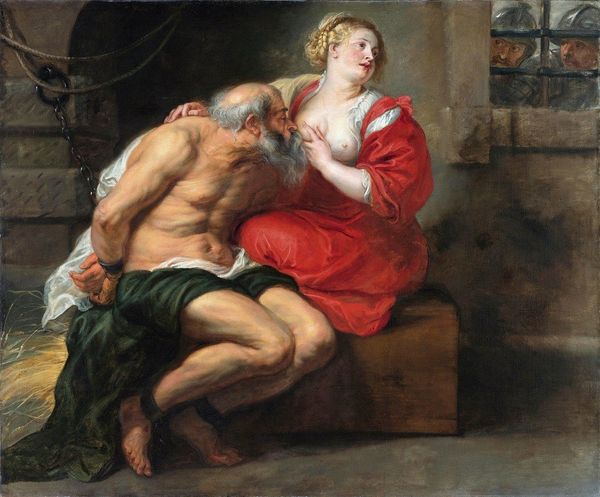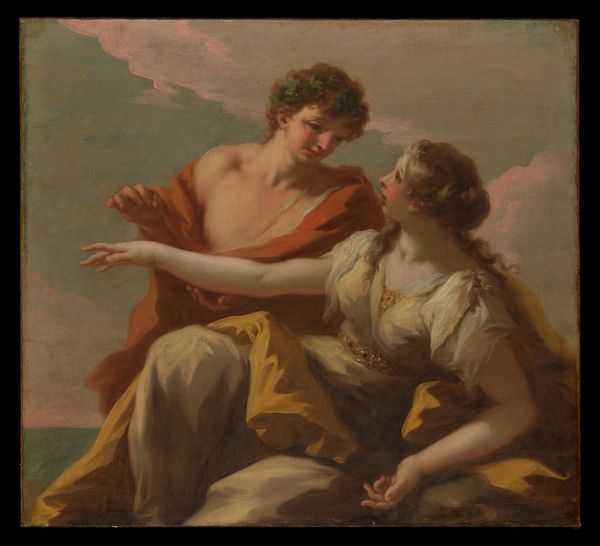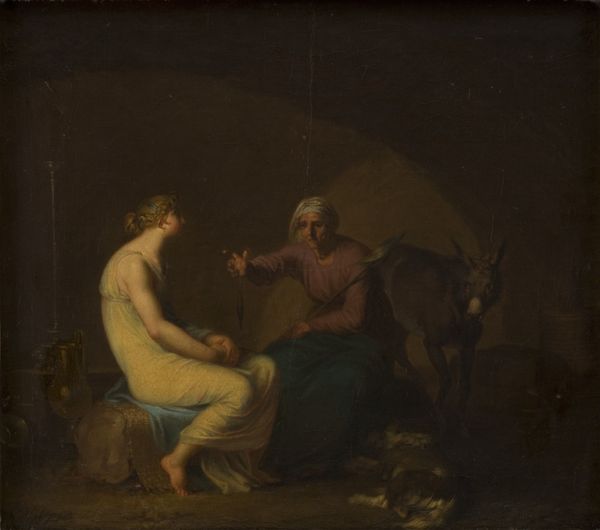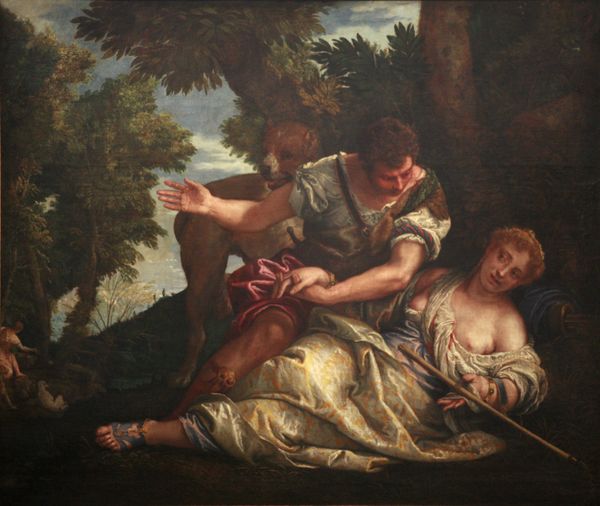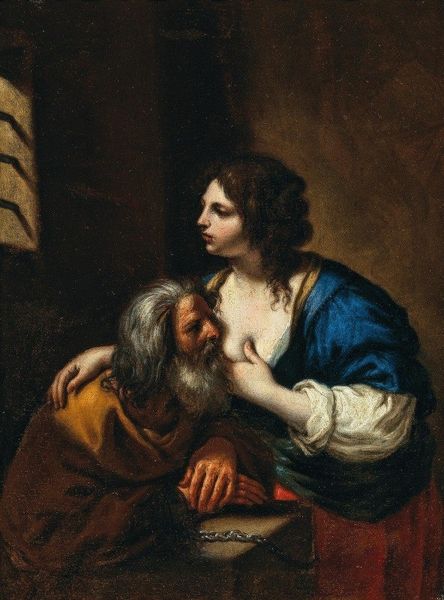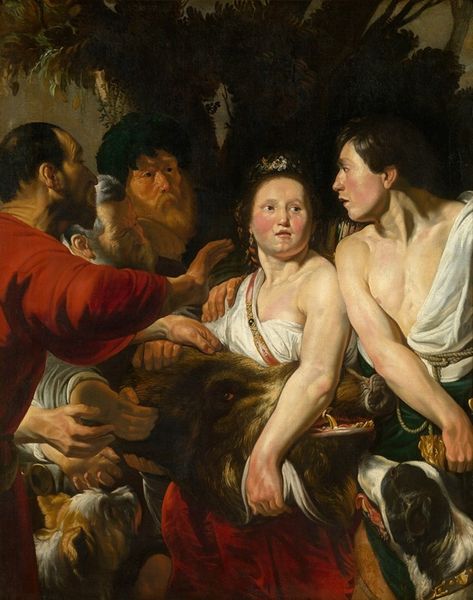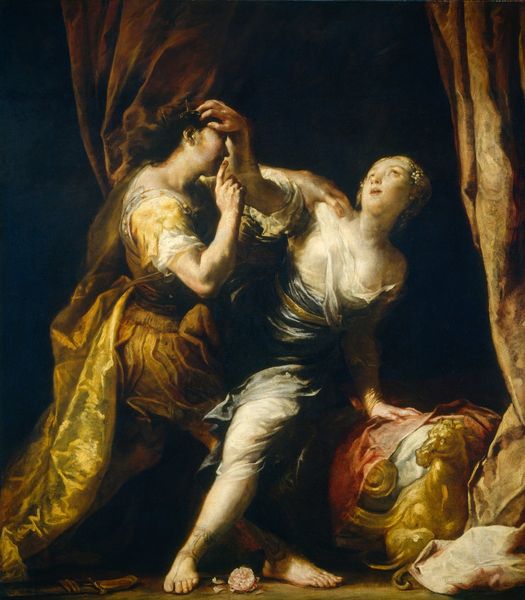
oil-paint
#
portrait
#
baroque
#
oil-paint
#
genre-painting
#
history-painting
#
nude
Dimensions: height 156 cm, width 117.5 cm, depth 3.0
Copyright: Rijks Museum: Open Domain
Editor: This is "Cimon and Pero," painted by Willem Drost around 1655-1657, using oil paint. The scene is...intense, a depiction of a woman breastfeeding an older, shackled man. What's particularly striking is the raw contrast between imprisonment and maternal sustenance. What do you see in this piece? Curator: Beyond the immediate narrative, consider the materials: the pigments ground and mixed, the canvas woven from flax, stretched and primed. Oil paint itself, a transformative medium that allows for layering and luminosity. Drost's labor, physically applying these materials, connects to the themes of labor and dependence depicted. Notice the chains – manufactured objects signifying confinement – juxtaposed with the soft flesh and flowing drapery. What do these contrasts suggest about societal views on obligation and power? Editor: It's interesting you focus on the physical objects themselves, the paint, the chains. I was stuck on the emotional aspect of the story. It seems strange to consider the material production alongside such a human story. Curator: But the story is mediated through those materials! Think about who controlled the production and distribution of pigments, canvas, even images like this one. The availability and cost of these materials dictated who could create art and what stories could be told. It makes you question the "high art" label and the often-unseen labor involved, doesn’t it? It also begs the question about accessibility and the cultural capital this scene may have accrued. Editor: I guess I hadn't considered the societal forces embedded within the materials themselves. Thinking about the production and control behind even simple oil paint offers a completely different lens through which to interpret art! Curator: Exactly. This shift towards materiality, rather than pure aesthetics, forces us to question what we value in art, and how it reflects the values of the societies that produce and consume it.
Comments
rijksmuseum about 2 years ago
⋮
Rembrandt’s pupil Willem Drost painted this rare work during his sojourn in Venice, where he met an untimely death. The exemplary story of Cimon and Pero dates from Roman antiquity and is about ultimate selfsacrifice and charity. Sentenced to death by starvation, Cimon was kept alive by his daughter Pero who visited him in prison and secretly breastfed him.
Join the conversation
Join millions of artists and users on Artera today and experience the ultimate creative platform.


